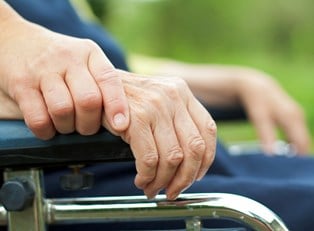Parkinson’s disease affects the nervous system and the brain. It is difficult to study and treat, and some of the underlying causes and mechanisms that trigger the disease are not fully understood at this time. Researchers have managed to isolate several risk factors that could increase your odds of developing Parkinson’s disease.
Age
One of the first risk factors for Parkinson’s disease is age. The disease can move slowly and gets worse progressively over time. Young people do not commonly develop the disease. The risk of developing Parkinson’s disease goes up as a person reaches middle age. Individuals who are 60 years old and above are at the greatest risk of developing the disease. Age, however, does not usually cause Parkinson’s disease alone. It is often just one of many different contributing factors.
Gender
Studies have shown that men tend to get Parkinson’s disease more frequently than women do. The risk is increased only slightly for men. The exact reason for this is not fully know. One theory is that elevated estrogen levels in women actually help to protect the neurons in the brain. This can act as a defense against the development of Parkinson’s disease.
Genetics and Heredity
Certain genetic factors have been shown to increase the risk of getting Parkinson’s disease. People who have a specific gene known as alpha-synuclein are 1.5 times more likely eventually get Parkinson’s disease. The presence of the gene does not guarantee that someone will develop the disease. Additionally, your chance of getting the disease is higher if one or more people in your family have developed Parkinson’s disease.
Environmental Toxins
There is evidence that long-term or extreme exposure to certain environmental toxins will increase the likelihood of developing Parkinson’s disease over time. The toxins are mostly agricultural chemicals, such as pesticides and herbicides that are sprayed on commercial crops. Exposure can occur when working on a farm. It can also occur when the toxins are carried to nearby towns and residences in wind and water. The way to lower this risk factor is to avoid exposure to these chemicals and to avoid living near commercial farms using harmful pesticides and herbicides.
Hormonal Changes
Women who undergo hormonal changes face a slight increase in the chance of acquiring Parkinson’s disease. This seems to occur when the hormone estrogen begins to decline in the body. The estrogen might stop protecting the neurons in the brain. This affects production of a chemical called dopamine, possibly resulting in the development of Parkinson’s disease. Hormone replacement therapy can sometimes help, although there is not much research about the overall effectiveness of this treatment yet.
Head Trauma
Another potential factor that can increase the chance of Parkinson’s disease is head trauma. This means physical injuries to the head or upper neck. It is thought that head trauma might actually damage the neurons in the brain. This damage could lead to Parkinson’s disease in rare cases, especially if other risk factors are present.
Avoiding head trauma involves wearing a helmet when cycling, playing sports, or riding a motorcycle. It also involves being very careful to avoid falls and injuries. It can take years or decades for Parkinson’s disease to develop after head trauma.



